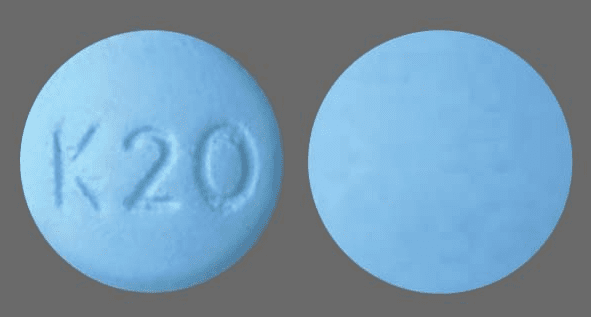Xpovio Disease Interactions
There are 8 disease interactions with Xpovio (selinexor).
- GI toxicities
- Hepatic dysfunction
- Hyponatremia
- Neurological toxicities
- Neutropenia
- Renal dysfunction
- Thrombocytopenia
- Weight loss
Selinexor (applies to Xpovio) GI toxicities
Moderate Potential Hazard, Moderate plausibility. Applicable conditions: Dehydration, Diarrhea, Vomiting
The use of selinexor can cause gastrointestinal toxicities. Manage nausea/vomiting/diarrhea by dose interruption, reduction, or discontinuation. Administer intravenous fluids and replace electrolytes to prevent dehydration in patients at risk. Use anti-nausea and anti-diarrheal medications as clinically indicated.
Selinexor (applies to Xpovio) hepatic dysfunction
Moderate Potential Hazard, Moderate plausibility. Applicable conditions: Liver Disease
Selinexor is metabolized by CYP450 3A4, multiple UDP-glucuronosyltransferases (UGTs) and glutathione S-transferases (GSTs). Care is recommended when using this agent in patients with moderate to severe hepatic impairment. The effect of moderate and severe hepatic impairment on selinexor pharmacokinetics is unknown. Mild hepatic impairment had no clinically significant effect on the pharmacokinetics of selinexor.
Selinexor (applies to Xpovio) hyponatremia
Moderate Potential Hazard, Moderate plausibility. Applicable conditions: Diabetes Mellitus
The use of selinexor can cause hyponatremia. Exercise care when using this agent in patients with hyperglycemia and high serum paraprotein levels. It is recommended to treat hyponatremia per clinical guidelines and to assess hydration and dietary intake. Interrupt or reduce dose, or permanently discontinue treatment based on severity.
Selinexor (applies to Xpovio) neurological toxicities
Moderate Potential Hazard, Moderate plausibility. Applicable conditions: Dehydration, Anemia
The use of selinexor may cause neurological toxicities. Exercise care when using this agent in dehydrated patients and those with anemia. It is recommended to optimize hydration status and hemoglobin levels to avoid exacerbation of dizziness or mental changes.
Selinexor (applies to Xpovio) neutropenia
Moderate Potential Hazard, Moderate plausibility. Applicable conditions: Infection - Bacterial/Fungal/Protozoal/Viral
The use of selinexor can cause neutropenia. Exercise care when using this agent in neutropenic patients and those at risk of infections. Monitor patients for signs and symptoms of concomitant infection, evaluate promptly, and institute measures according to clinical practice. Interrupt treatment, reduce dose, or permanently discontinue based on severity.
Selinexor (applies to Xpovio) renal dysfunction
Moderate Potential Hazard, Moderate plausibility.
No clinically significant differences in the pharmacokinetics of selinexor were observed in patients with mild to severe renal impairment (CrCl 15 to 89 mL/min, estimated by the Cockcroft-Gault equation). Care is recommended when using this agent in patients with end-stage renal disease (CrCl <15 mL/min) or hemodialysis as the effect on selinexor pharmacokinetics is unknown for these patients.
Selinexor (applies to Xpovio) thrombocytopenia
Moderate Potential Hazard, Moderate plausibility.
The use of selinexor can cause thrombocytopenia. Exercise care when using this agent in thrombocytopenic patients and those at risk of fatal hemorrhages. Monitor platelet counts at baseline and periodically as clinically indicated. Monitor for signs and symptoms of bleeding and interrupt or reduce the dose or permanently discontinue treatment based on severity.
Selinexor (applies to Xpovio) weight loss
Moderate Potential Hazard, Moderate plausibility. Applicable conditions: Weight Loss/Failure to Thrive, Anorexia/Feeding Problems
The use of selinexor can cause anorexia and weight loss. Exercise care in patients with anorexia and those at risk for weight loss. Manage with dose modifications, appetite stimulants, and nutritional support. Monitor patient weight at baseline, and regularly during treatment as clinically indicated.
Switch to professional interaction data
Xpovio drug interactions
There are 305 drug interactions with Xpovio (selinexor).
More about Xpovio (selinexor)
- Xpovio consumer information
- Check interactions
- Compare alternatives
- Pricing & coupons
- Drug images
- Side effects
- Dosage information
- During pregnancy
- FDA approval history
- Drug class: miscellaneous antineoplastics
- Breastfeeding
Related treatment guides
Drug Interaction Classification
| Highly clinically significant. Avoid combinations; the risk of the interaction outweighs the benefit. | |
| Moderately clinically significant. Usually avoid combinations; use it only under special circumstances. | |
| Minimally clinically significant. Minimize risk; assess risk and consider an alternative drug, take steps to circumvent the interaction risk and/or institute a monitoring plan. | |
| No interaction information available. |
See also:
Further information
Always consult your healthcare provider to ensure the information displayed on this page applies to your personal circumstances.


